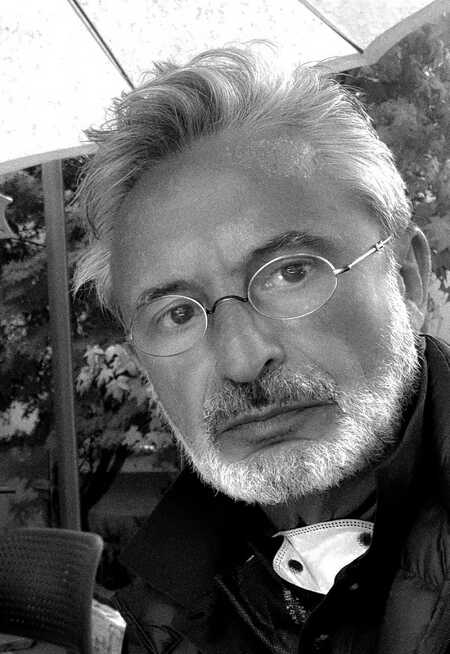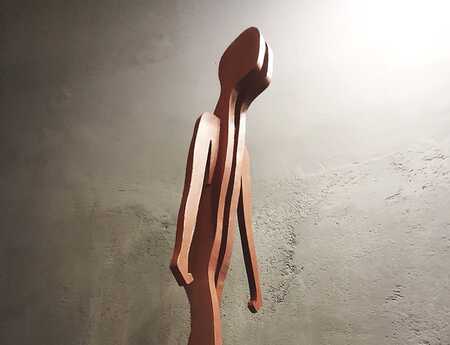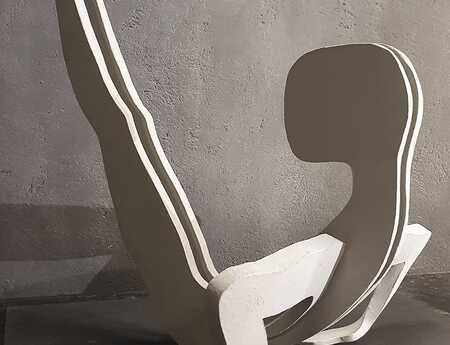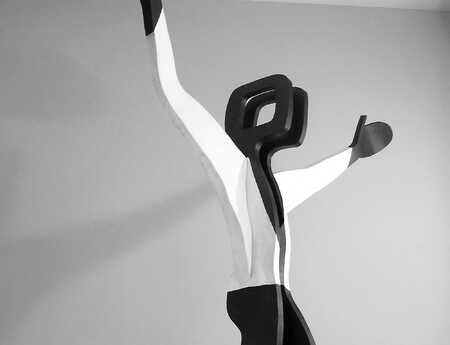
Spain
The Urban Sculptor
The urban sculptor needs to invent different ways to make his world understandable. Models, mock-ups, and prototypes are always made of lightweight materials on a small scale. Photomontages in well-known and recognizable places are a way of making the work more visual, on a large scale, for a greater impact; hoping to get someone to believe in the work, and commission a project.
The architect hidden behind the sculptor sees the sculpture as an urban element that is planned to be used and shared with the viewer. The work done makes no sense as a decorative object left on a shelf; it has to be outside sharing time and space with the viewer.
The architect understands that the sculpture has to have a social value because it is in the urban framework and does not make sense as a decorative object left on a shelf.
The urban sculptor and architect have never felt the need to call themselves artists, since the word does not really define the work done. They are creative workers who keep doing what they do to seek excellence in their work. Every day is work, there is no magic in between; there is no muse that comes to illuminate, it is just work and more work where one thing leads to another.
To start this adventure years ago, the material used was recycled cardboard as the base of the work, since it was the cheapest material to find. The work was always considered a prototype. And it was understood that for these projects to come true, sponsors are required to reach the point where the work becomes real, part of people's lives in streets and squares, public spaces where they can interact with passers-by and integrate into the lives of the people in the neighborhoods.
The human figure, how it is expressed, its movements, and how it relates to the environment are the leitmotiv with which one works, as are the confrontations between it and the environment that end in violence, repression, and cruelty by power against people, which repeat themselves cyclically throughout history.
The theme of the work carried out varies constantly between the values of decomposition, movement, and solitude, since it is a way of constantly forcing the imagination, with the need to have several projects lined up, waiting to be developed, so that when one is finished, another comes without interruption; or even develop several different projects at the same time to keep your mind constantly working. Where there is passion, there must be work and more work.
Within all these variables, the human figure continues to be the central axis of the work. The constant that connects everything is the human being and his ability or inability to relate to others. It is woven in different states of abstraction and with different ways of relating to others, with loneliness being a constant that ends up ordering the entire work.
Work after the pandemic opens as a reaction to COVID, new personal ideas, and a different vision of work, adding values of movement and exercise to fight against the stagnation of the pandemic. Dancing and training become curative motives. The movement related to music and the mind-and-body cleansing exercise serve as personal instruments and also as a means to connect with others by sharing experiences.
Creativity and work cannot be excluded because both work as a whole. There is an idea, and you work on it, and as you work on it, the idea goes into another dimension, sometimes completely different from where it started, until the ideas flow and your work starts to make complete sense. Everything that is done has a purpose, which is often related to the moment lived. Finally, everything done is related in some way; nothing can be overlooked because everything contributes to personal and professional development.
And all the work that has been done through these years converges in the Urban Sculpture Project, giving meaning to all the mock-ups as part of the concept that a sculpture in the street is a step in culture. All the prototypes were always large enough to stand with people around them.


